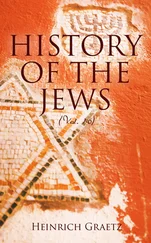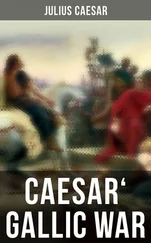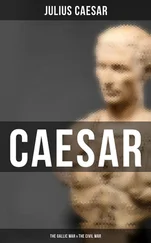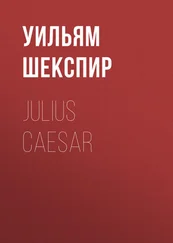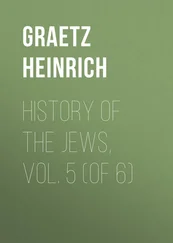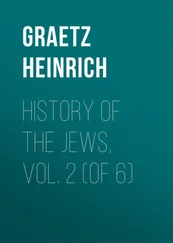Napoleon III - History of Julius Caesar Vol. 2 of 2
Здесь есть возможность читать онлайн «Napoleon III - History of Julius Caesar Vol. 2 of 2» — ознакомительный отрывок электронной книги совершенно бесплатно, а после прочтения отрывка купить полную версию. В некоторых случаях можно слушать аудио, скачать через торрент в формате fb2 и присутствует краткое содержание. Жанр: foreign_antique, foreign_prose, Биографии и Мемуары, на английском языке. Описание произведения, (предисловие) а так же отзывы посетителей доступны на портале библиотеки ЛибКат.
- Название:History of Julius Caesar Vol. 2 of 2
- Автор:
- Жанр:
- Год:неизвестен
- ISBN:нет данных
- Рейтинг книги:4 / 5. Голосов: 1
-
Избранное:Добавить в избранное
- Отзывы:
-
Ваша оценка:
- 80
- 1
- 2
- 3
- 4
- 5
History of Julius Caesar Vol. 2 of 2: краткое содержание, описание и аннотация
Предлагаем к чтению аннотацию, описание, краткое содержание или предисловие (зависит от того, что написал сам автор книги «History of Julius Caesar Vol. 2 of 2»). Если вы не нашли необходимую информацию о книге — напишите в комментариях, мы постараемся отыскать её.
History of Julius Caesar Vol. 2 of 2 — читать онлайн ознакомительный отрывок
Ниже представлен текст книги, разбитый по страницам. Система сохранения места последней прочитанной страницы, позволяет с удобством читать онлайн бесплатно книгу «History of Julius Caesar Vol. 2 of 2», без необходимости каждый раз заново искать на чём Вы остановились. Поставьте закладку, и сможете в любой момент перейти на страницу, на которой закончили чтение.
Интервал:
Закладка:
The country was, without any doubt, intersected by carriage roads, since the Gauls possessed a great number of all sorts of wagons, 55 55 “Carpenta Gallorum.” (Florus, I. 13) – “Plurima Gallica (verba) valuerunt, ut reda ac petorritum.” (Quintilian, De Institutione Oratoria , lib. I., cap. v. 57.) – “Petorritum enim est non ex Græcia dimidiatum, sed totum transalpibus, nam est vox Gallica. Id scriptum est in libro M. Varronis quarto decimo Rerum Divinarum ; quo in loco Varro, quum de petorrito dixisset, esse id verbum Gallicum dixit.” (Aulus Gellius, XV. 30.) – “Petoritum et Gallicum vehiculum est, et nomen ejus dictum esse existimant a numero quatuor rotarum. Alii Osce, quod hi quoque petora quatuor vocent. Alii Græce, sed αἱλικὡς dictum.” (Festus, voc. Petoritum , p. 206, edit. Müller.) – “Belgica esseda, Gallicana vehicula. Nam Belga civitas est Galliæ in qua hujusmodi vehiculi repertus est usus.” (Servius, Commentaries on the Georgics of Virgil, lib. III. v. 204. – Cæsar, De Bello Gallico , IV. 33, and passim .
since there still remain traces of Celtic roads, and since Cæsar makes known the existence of bridges on the Aisne, 56 56 De Bello Gallico , II. 5.
the Rhone, 57 57 De Bello Gallico , I. 7.
the Loire, 58 58 De Bello Gallico , VII. 11.
the Allier, 59 59 De Bello Gallico , VII. 34, 53.
and the Seine. 60 60 De Bello Gallico , VII. 58.
It is difficult to ascertain exactly the number of the population; yet we may presume, from the contingents furnished by the different states, that it amounted to more than seven millions of souls. 61
Political Divisions.
II. Gaul, according to Cæsar, was divided into three great regions, distinct by language, manners, and laws: to the north, Belgic Gaul, between the Seine, the Marne, and the Rhine; in the centre, Celtic Gaul, between the Garonne and the Seine, extending from the ocean to the Alps, and comprising Helvetia; to the south, Aquitaine, between the Garonne and the Pyrenees. 62( See Plate 2. ) We must, nevertheless, comprise in Gaul the Roman province, or the Narbonnese, which began at Geneva, on the left bank of the Rhone, and extended in the south as far as Toulouse. It answered, as nearly as possible, to the limits of the countries known in modern times as Savoy, Dauphiné, Provence, Lower Languedoc, and Roussillon. The populations who inhabited it were of different origins: there were found there Aquitanians, Belgæ, Ligures, Celts, who had all long undergone the influence of Greek civilisation, and especially establishments founded by the Phocæans on the coasts of the Mediterranean. 63
These three great regions were subdivided into many states, called civitates – an expression which, in the “Commentaries,” is synonymous with nations 64– that is, each of these states had its organisation and its own government. Among the peoples mentioned by Cæsar, we may reckon twenty-seven in Belgic Gaul, forty-three in Celtic, and twelve in Aquitaine: in all, eighty-two in Gaul proper, and seven in the Narbonnese. Other authors, admitting, no doubt, smaller subdivisions, carry this number to three or four hundred; 65but it appears that under Tiberius there were only sixty-four states in Gaul. 66Perhaps, in this number, they reckoned only the sovereign, and not the dependent, states.
1. Belgic Gaul. The Belgæ were considered more warlike than the other Gauls, 67because, strangers to the civilisation of the Roman province and hostile to commerce, they had not experienced the effeminating influence of luxury. Proud of having escaped the Gaulish enervation, they claimed with arrogance an origin which united them with the Germans their neighbours, with whom, nevertheless, they were continually at war. 68They boasted of having defended their territory against the Cimbri and the Teutones, at the time of the invasion of Gaul. The memory of the lofty deeds of their ancestors inspired them with a great confidence in themselves, and excited their warlike spirit. 69
The most powerful nations among the Belgæ were the Bellovaci, 70who could arm a hundred thousand men, and whose territory extended to the sea, 71the Nervii, the Remi, and the Treviri.
2. Celtic Gaul. 72The central part of Gaul, designated by the Greek writers under the name of Celtica , and the inhabitants of which constituted in the eyes of the Romans the Gauls properly so named ( Galli ), was the most extensive and most populous. Among the most important nations of Celtic Gaul were reckoned the Arverni, the Ædui, the Sequani, and the Helvetii. Tacitus informs us that the Helvetii had once occupied a part of Germany. 73
These three first peoples often disputed the supremacy of Gaul. As to the Helvetii, proud of their independence, they acknowledged no authority superior to their own. In the centre and south of Celtic Gaul dwelt peoples who had also a certain importance. On the west and north-west were various maritime populations designated under the generic name of Armoricans , an epithet which had, in the Celtic tongue, the meaning of maritime. Small Alpine tribes inhabited the valleys of the upper course of the Rhone, at the eastern extremity of Lake Lémon, a country which now forms the Valais.
3. Aquitaine. 74Aquitaine commenced on the left bank of the Garonne: it was inhabited by several small tribes, and contained none of those agglomerations which were found among the Celts and the Belgæ. The Aquitanians, who had originally occupied a vast territory to the north of the Pyrenees, having been pushed backward by the Celts, had but a rather limited portion of it in the time of Cæsar.
The three regions which composed Gaul were not only, as already stated, divided into a great number of states, but each state ( civitas ) was farther subdivided into pagi , 75representing, perhaps, the same thing as the tribe among the Arabs. The proof of the distinct character of these agglomerations is found in the fact that in the army each of them had its separate place, under the command of its own chieftains. The smallest subdivision was called vicus . 76Such, at least, are the denominations employed in the “Commentaries,” but which were certainly not those of the Celtic language. In each state there existed principal towns, called indifferently by Cæsar urbs or oppidum ; 77yet this last name was given by preference to considerable towns, difficult of access and carefully fortified, placed on heights or surrounded by marshes. 78It was to these oppida that, in case of attack, the Gauls transported their grain, their provisions, and their riches. 79Their habitations, established often in the forests or on the bank of a river, were constructed of wood, and tolerably spacious. 80
Manners.
III. The Gauls were tall in stature, their skin was white, their eyes blue, their hair fair or chestnut, which they dyed, in order to make the colour more brilliant. 81They let their beard grow; the nobles alone shaved, and preserved long moustaches. 82Trousers or breeches, very wide among the Belgæ, but narrower among the southern Gauls, and a shirt with sleeves, descending to the middle of the thighs, composed their principal dress. 83They were clothed with a mantle or saie , 84magnificently embroidered with gold or silver among the rich, 85and held about the neck by means of a metal brooch. The lowest classes of the people used instead an animal’s skin. The Aquitanians covered themselves, probably according to the Iberic custom, with cloth of coarse wool unshorn. 86
The Gauls wore collars, earrings, bracelets, and rings for the arms, of gold or copper, according to their rank; necklaces of amber, and rings, which they placed on the third finger. 87
Читать дальшеИнтервал:
Закладка:
Похожие книги на «History of Julius Caesar Vol. 2 of 2»
Представляем Вашему вниманию похожие книги на «History of Julius Caesar Vol. 2 of 2» списком для выбора. Мы отобрали схожую по названию и смыслу литературу в надежде предоставить читателям больше вариантов отыскать новые, интересные, ещё непрочитанные произведения.
Обсуждение, отзывы о книге «History of Julius Caesar Vol. 2 of 2» и просто собственные мнения читателей. Оставьте ваши комментарии, напишите, что Вы думаете о произведении, его смысле или главных героях. Укажите что конкретно понравилось, а что нет, и почему Вы так считаете.




